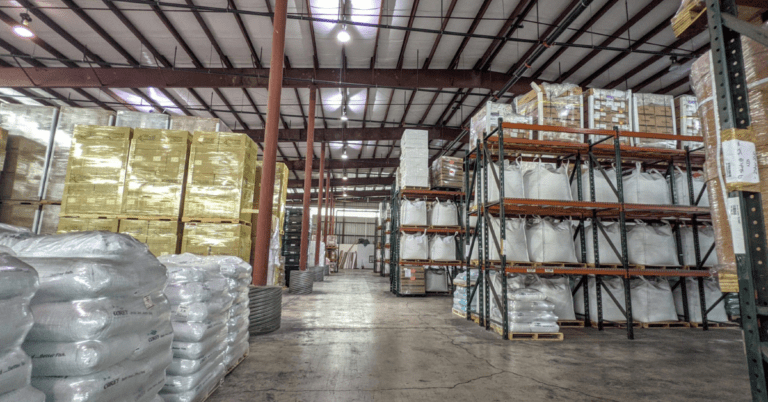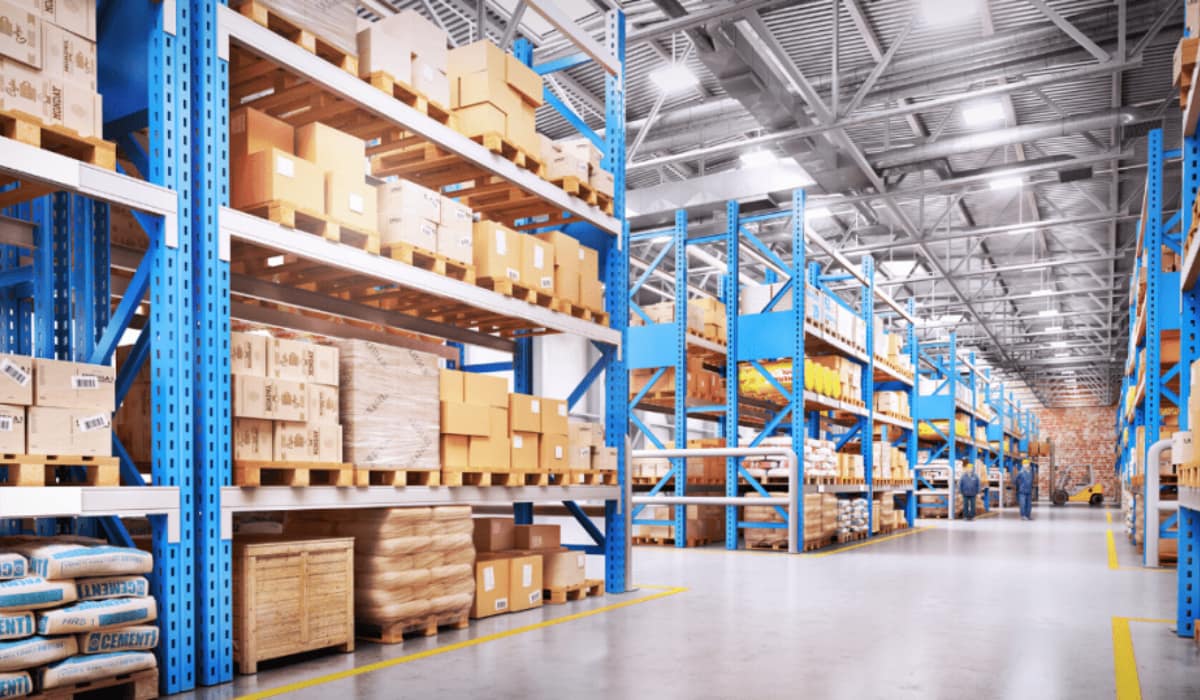An area for storing inventory is a warehouse. Maintaining a supply of raw materials, components, spare parts, fuels, work-in-progress, finished goods, etc. in a convenient storage place and collecting the stock from there as needed is referred to as warehousing. Storage facility development includes warehousing. One or more logistical functions are supported by a facility structure, which is a component of the logistical infrastructure.
Additionally, the term “warehousing” describes tasks that involve keeping items on a big scale in a systematic and ordered manner and making them easily accessible when needed. In other terms, warehousing is the practice of keeping or conserving large amounts of things from the point of purchase or manufacturing to the point of usage or sale.
Functions:
There are various functions involved in warehousing:
- Receiving
- Inspecting
- Repackaging
- Put Away
- Picking & Selecting an Order
- Sorting
- Packing & Shipping
- Cross-Docking
- Replenishing
1. Receiving:
This involves physically unloading inbound transport, inspecting, documenting receipts, and determining where to store the received products in the warehouse. It may also involve tasks like unpacking and repackaging, quality control inspections, and interim quarantine storage for commodities while quality control clears them.
2. Inspection:
Checking the arriving items for the required qualities in both quality and quantity.
3. Repackaging:
It’s possible for incoming lots to have unusual packing that can’t be kept there as is. In these circumstances, the goods must be pre-packed into unit loads or pallet loads that are suitable for storage.
4. Put Away:
Binning and storing the things where they belong, including temporary locations near the receiving peer.
5. Picking & Selecting An Order:
To fulfill client orders, goods are chosen from order-picking stock in the needed quantities and at the required times. When items are received from suppliers, let’s say in entire pallet amounts, but orders from customers are for quantities smaller than a pallet, picking frequently requires break bulk activities.
For a warehouse to provide excellent customer service, order picking is crucial. However, it is also expensive and historically consumes a large percentage of the staffing budget. To effectively operate a warehouse, picking systems and processes must be well-designed and managed.
6. Sorting:
As a result, when goods arrive at a warehouse, they can be quickly sorted into customer orders. The products are then immediately gathered according to order.
7. Packing & Shipping:
The chosen items are combined and packaged in accordance with the customer’s order specifications. It is delivered in accordance with customer orders and designated locations.
8. Cross-Docking:
Products are not at all stored in the designated areas; they are instead moved straight from receiving to the shipping port.
9. Replenishing:
To prevent order picking sites from going empty, this is the moving of items from reserve storage to order picking in greater order amounts, like a whole pallet at a time. To maintain high levels of order filling, stock availability for order choosing is crucial.
Types Of Warehousing
Let’s categorize the many kinds of warehouses. A variety of warehouse types emerged to satisfy their needs, and they can be categorized as follows:
- Public Warehouse
- Private Warehouse
- Bonded Warehouse
- Government Warehouse
- Co-Operative Warehouse
1. Public Warehouse
Public warehouses are those that are utilized to hold commodities belonging to the public. In these warehouses, anyone can store their items for a fee. These warehouses could be owned by a person, a partnership, or a business.
Government approval is needed to launch these warehouses. The functions and operations of these warehouses are also subject to government regulation. Manufacturers, wholesalers, exporters, importers, government organizations, etc. use these warehouses most of the time.
2. Private Warehouse
Private warehouses are those that are owned and operated by manufacturers or traders and used only to keep their own inventory of goods. Typically, farmers build these warehouses close to their fields, wholesalers and retailers build them close to their business hubs, and manufacturers build them close to their factories.
The architecture and amenities offered there are suitable for the kind of stored goods.
3. Bonded Warehouse
Governmental as well as non-governmental organizations own, run, and operate these warehouses. Licensing from the government is required for private bonded warehouses. Imported items that haven’t had their import duty paid are kept in bonded warehouses.
Importers are prohibited from removing products from ports until the applicable tariff has been paid. Usually, dock authorities own these warehouses, which are situated close to ports.
4. Government Warehouse
Government and business organizations jointly own, operate, and oversee these warehouses. Government licenses are required for private bonded warehouses. Imported items that still owe import duty are kept in bonded warehouses.
Importers are prohibited from removing goods from ports until the applicable tariff has been paid. These warehouses are typically situated close to ports and are owned by the dock authority.
5. Co-Operative Warehouse
Cooperative societies own, operate, and maintain these warehouses. They offer the citizens of their community warehousing facilities at the most affordable prices.
Why do we need Warehouses?
These are the requirements for the warehouse to carry out specific tasks:
- Seasonal Demand
- Seasonal Production
- Large-Scale Production
- Continuous Production
- Quick Supply
- Price Stabilization

1. Seasonal Demand
There are some products that have seasonal demand, such as woolen clothing in the winter or umbrellas in the rainy season. To accommodate the seasonal demand, these products are produced all throughout the year. Therefore, it is necessary to store these items in a warehouse so that they can be made available as needed.
2. Seasonal Production
You are aware that although agricultural products are used or consumed all year round, they are only harvested during specific seasons. The requirement for appropriate warehousing, where these goods may be delivered as and when needed, arises from the demand for proper storage for these commodities.
3. Large-Scale Production
Nowadays, the production of manufactured items occurs to satisfy both current and future consumer demand. To take advantage of the advantages of large-scale production, which is more affordable, manufacturers also make things in massive quantities.
As a result, the final goods, which are manufactured in vast quantities, need to be carefully stored until they are cleared by sales.
4. Continuous Production
A sufficient supply of raw materials is necessary for manufacturers to operate continuously. To ensure continuous manufacturing, it is necessary to maintain an adequate stock of raw materials in the warehouse.
5. Quick Supply
Both industrial and agricultural products are made in a few distinct locations yet are used all over the nation. For these commodities to be quickly made available to consumers when they need them, it is crucial to keep them stocked close to the consumption location.
6. Price Stabilization
Having sufficient inventory in the warehouses is necessary to keep the pricing of the items at an acceptable level. Products’ market prices may rise if they are in short supply. Once more, overproduction and supply could result in a drop in product pricing.
Storage results in price stabilization by ensuring a consistent supply of products.

